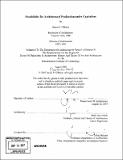| dc.contributor.advisor | Mark Jarzombek. | en_US |
| dc.contributor.author | O'Brien, James P. (James Philip) | en_US |
| dc.contributor.other | Massachusetts Institute of Technology. Dept. of Architecture. | en_US |
| dc.date.accessioned | 2008-05-19T16:11:39Z | |
| dc.date.available | 2008-05-19T16:11:39Z | |
| dc.date.copyright | 2007 | en_US |
| dc.date.issued | 2007 | en_US |
| dc.identifier.uri | http://hdl.handle.net/1721.1/41718 | |
| dc.description | Thesis (Ph. D.)--Massachusetts Institute of Technology, Dept. of Architecture, 2007. | en_US |
| dc.description | Includes bibliographical references (leaves 163-165). | en_US |
| dc.description.abstract | This dissertation explores the question: What effects do architecture and the economic realm have upon one another? I begin with an analysis of a specific trajectory in twentieth-century work on architectural theory and capitalism by Manfredo Tafuri and Fredric Jameson. I then review the historical use, and the contemporary meanings, of the term "vernacular" in architectural discourse. This is done to rehabilitate the term, which has become so laden with historical meaning as to impair its usefulness. My work to properly decouple the architectural historical specificity from the term, to reanimate it, enables me to develop a general framework for thinking about the relationship between innovative production and general production (both historical and contemporary). My development of this framework in the contemporary context positions innovative architectural production as a cultural/aesthetic act that does not have to be bracketed out of the realm of capital, commoditization, or the market. It does not insist aesthetic production take a position against its co-option. Rather I indicate where I and other theorists have seen that position to be historically problematic (particularly for the avant-gardes). Co-option, defined here as the popular reproduction of unique acts, is treated nonpejoratively as the structural link between the political economy and innovative cultural, aesthetic, or political production. I then apply this general framework to the question of maximizing power as an architect within capitalist relations. Here I discuss psychological and sociological models for the creative individual's behavior in professional relationships. In my analysis I prioritize those tactics and strategies that may enable an architect to have a sustainable career of prolonged creative influence. | en_US |
| dc.description.abstract | (cont.) I then outline major criteria in the development of the latest technologies for architects. These criteria are principles for the development of digital tools that would enable sustained creative design within the capitalist political economy, where building activity is structured as a project- based environment of distributed, collaborative expertise, and by mandatory compliance with social norms expressed as the legal rights of others through building ordinances, codes, and a consensus of self-interested professionals, clients, landowners, builders, and municipalities. Lastly the preceding parts of this dissertation are used as grounds for my consideration, in the conclusion, of possible political effects from architectural production under capitalism. Here I make the determination that, through architecture alone, there are none. | en_US |
| dc.description.statementofresponsibility | by James P. O'Brien. | en_US |
| dc.format.extent | 177 leaves | en_US |
| dc.language.iso | eng | en_US |
| dc.publisher | Massachusetts Institute of Technology | en_US |
| dc.rights | M.I.T. theses are protected by
copyright. They may be viewed from this source for any purpose, but
reproduction or distribution in any format is prohibited without written
permission. See provided URL for inquiries about permission. | en_US |
| dc.rights.uri | http://dspace.mit.edu/handle/1721.1/7582 | en_US |
| dc.subject | Architecture. | en_US |
| dc.title | Possibilities for architectural production under capitalism | en_US |
| dc.type | Thesis | en_US |
| dc.description.degree | Ph.D. | en_US |
| dc.contributor.department | Massachusetts Institute of Technology. Department of Architecture | |
| dc.identifier.oclc | 222316796 | en_US |
